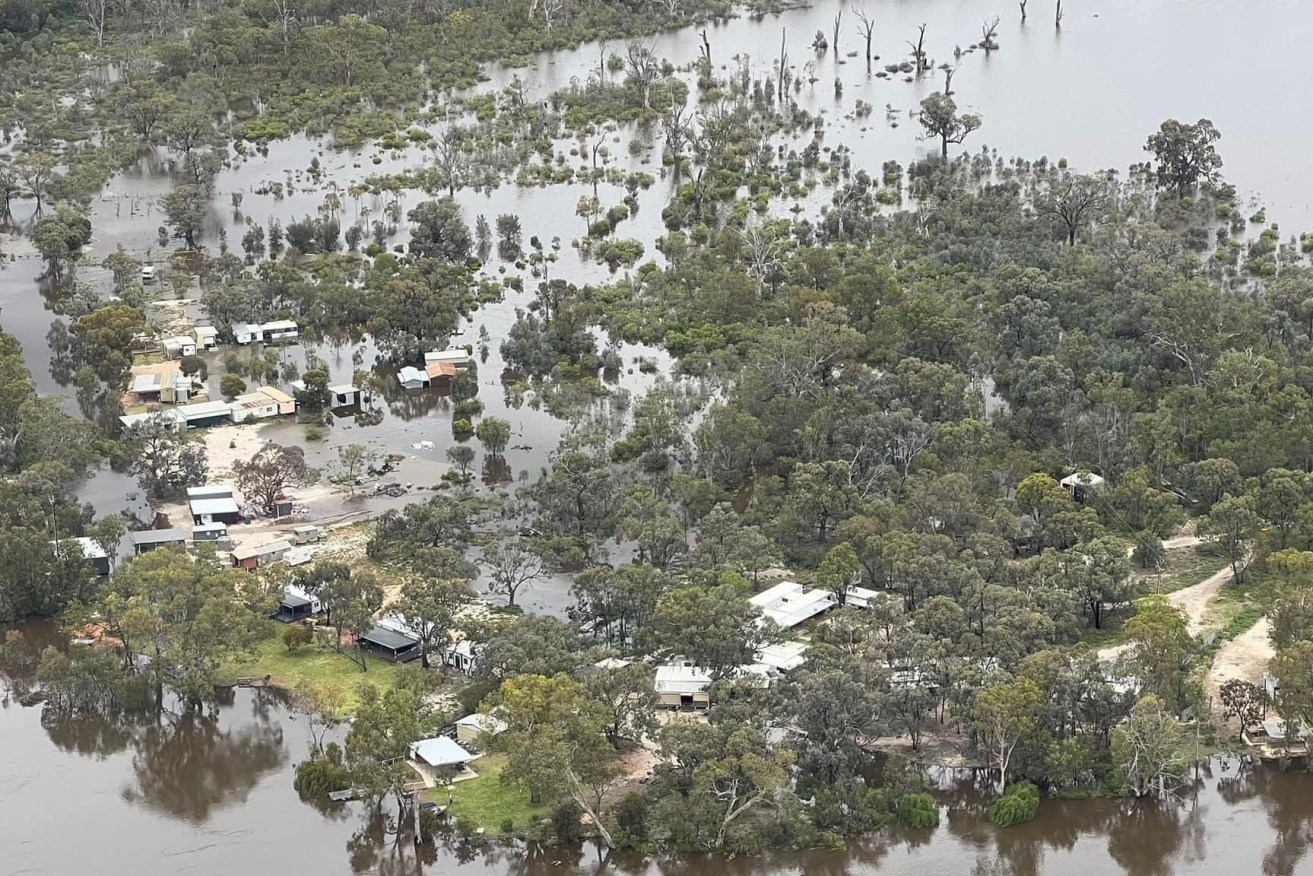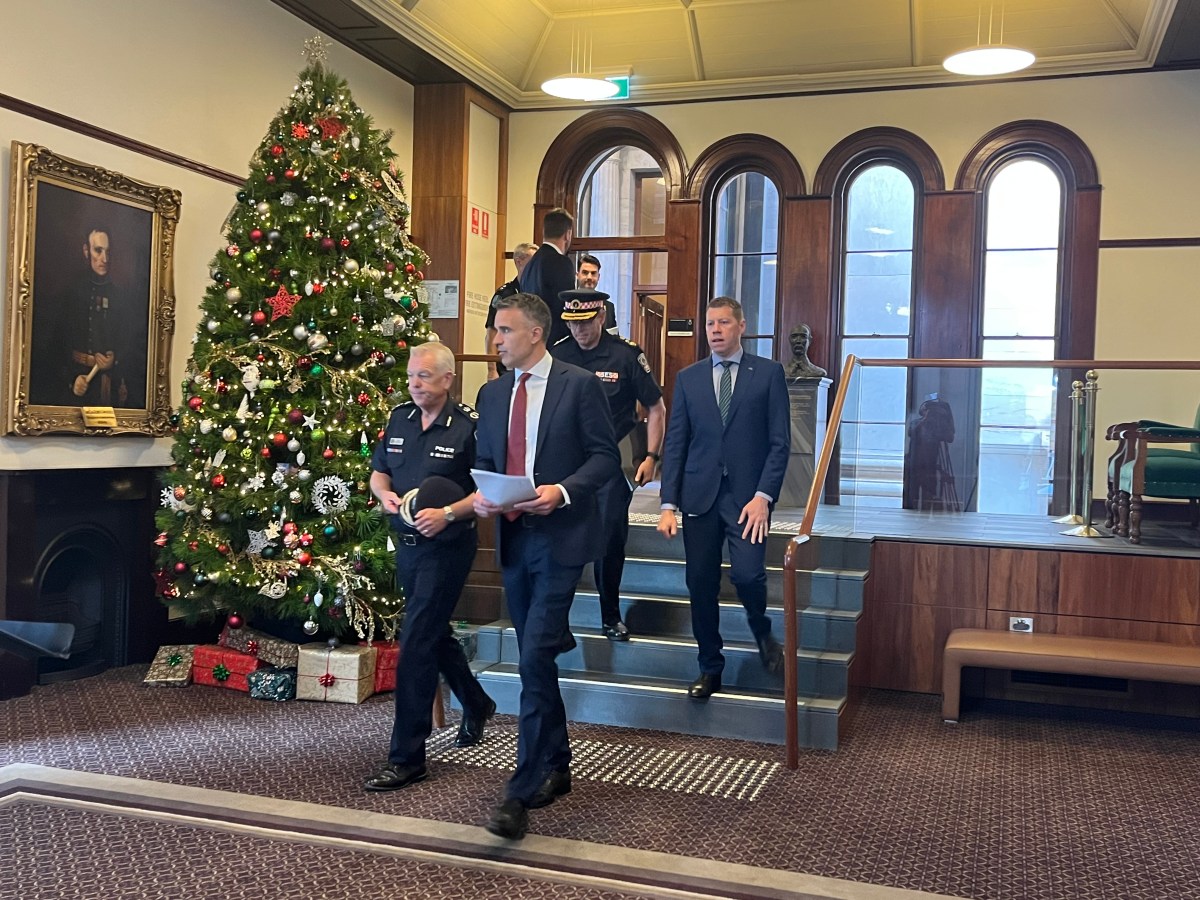Authorities start door-knocking hundreds of River Murray homes
Emergency services officers will door-knock 455 homes at risk of being inundated by rising River Murray flows, in what the Premier describes as “one of the most substantial outbound contact efforts” in the state’s history.

River Murray water surrounds McBean Pound near Blanchetown. Photo: Glenis T-Woods/ Facebook
State government data analysis shows 455 homes across a 600 square-kilometre radius are at risk of flooding should River Murray flows reach 200 gigalitres a day, while approximately 1086 homes are at risk should flows reach 250 gigalitres a day.
The government expects flows to reach 175 gigalitres a day by next week, but a second peak predicted early next month could see flows reach between 185 and 220 gigalitres.
To ensure families plan in advance should they need to evacuate, officers from SA Police, the Metropolitan and Country Fire Services and State Emergency Service this morning started doorknocking the 455 households at risk of flooding at the 200 gigalitre mark.
“The state government has now initiated probably one of the most substantial outbound contact efforts that has ever occurred in the lead-up to an emergency in the history of the state,” Premier Peter Malinauskas said.
“This isn’t just a matter of… going into a suburb and door-knocking one particular community – it is across a very substantial parcel of land, which speaks to the size of the effort.”
The five-day door-knocking effort is being coordinated by SA Police, with homes close to the border in towns such as Renmark the first to be targeted.
All up, high flows are likely to inundate 3500 to 4000 properties throughout the state, but some of those include vacant land, sheds and empty shacks.
Police Commissioner and state emergency coordinator Grant Stevens today said that he expected the majority of families in River Murray communities to have already started planning for possible evacuation.
He said officers were door-knocking households “out of an abundance of caution” to ensure people had alternative accommodation.
“We’re anticipating that the peak flow rate will be at the border within the next few days, but obviously it flows down the river so we do have time to take on some of those lower priority locations after that five-day period,” he said.
“We are setting a goal of by the end of the weekend having visited most of those properties to make sure those people have the relevant information and that we’re satisfied that they have put steps in place to source alternative accommodation and protect their properties as much as possible.”

Premier Peter Malinauskas, Police Commissioner Grant Stevens, Emergency Services Minister Joe Szakacs and SES chief Chris Beattie at Parliament House this morning. Photo: Stephanie Richards/InDaily
Emergency services personnel will provide residents with information sheets and calling cards, with the government encouraging them to discuss their plans if they need to evacuate.
The SES is also using the Alert SA app to contact people whose homes are at risk of flooding.
A limited number of short-term emergency accommodation places at hotels have been identified but residents threatened by flooding who have their own caravans or camper trailers are being urged to safely move to caravan parks.
The government has secured a powered site at the Berri caravan park to accommodate up to 200 caravans.
For those who need to evacuate their homes for an extended period and who can’t access private rental, the government is offering assistance with bond and rent in advance along with grants worth up to $5000.
The government last week announced a $51.6 million emergency support package for people impacted by the flooding.
Malinauskas this morning said that there was capacity in the state budget to increase spending on emergency support if it was required.
“We’ve made it clear that we stand ready to make an additional contribution if required to do so,” he said.
“But, as things currently stand, we know that there is more than enough capacity in terms of what we’ve made available for a lot of people to take it up.”
Meanwhile, Telstra is sourcing generators to safeguard mobile phone coverage in flood-affected areas but warns services could be impacted if there is an extended loss of main powers.
Regional general manager Michael Patterson said there are about 30 telephone exchanges and 32 Telstra mobile base stations in the broader Riverland area. A team has travelled to sites, including Renmark to assess infrastructure at Ral Ral Avenue, to ensure they can continue operating safely with rising water levels.
“Telstra has reviewed our key infrastructure in the areas that are expected to have some level of flooding and had a team do site visits last week,” Patterson said.
“At this stage we do not believe any of major exchanges or mobile base station sites will be flooded but services could still be impacted if there is an extended loss of mains power. We are currently preparing plans for the provision of temporary generators to these sites if required.”
There are approximately 30 telephone exchanges and 32 Telstra mobile base stations that service communities living near the River Murray between Renmark and Murray Bridge.
SES chief Chris Beattie said yesterday that 65 local roads were closed across the state as high water either flooded access or made driving along them dangerous.
SA Power Networks head of corporate affairs Paul Roberts said there was likely to be about 1,950 further disconnections by the end of the week, “mainly in low lying areas where there has been inundation, or flooding is imminent within days as the initial forecast flood peak moves along the river”.
Disconnections were prompted by flooding or imminent flooding of properties or safe clearances under powerlines crossing floodplains or the river.
“We are making ongoing assessments about the safety of electricity supply for customers and the community and safety for our crews,” he said.
“We are doing everything we can to work with customers and will give as much notice as we can of impending disconnections.”
He said SA Power Networks was planning to a 250GL/per day flow.
“We have extensive infrastructure in flood plains and river crossings. For example, the number of poles in the modelled flood zone at 160GL a day is 3,312. At 200GL a day it is 4,033 and at 250GL a day it is 6,594.”




